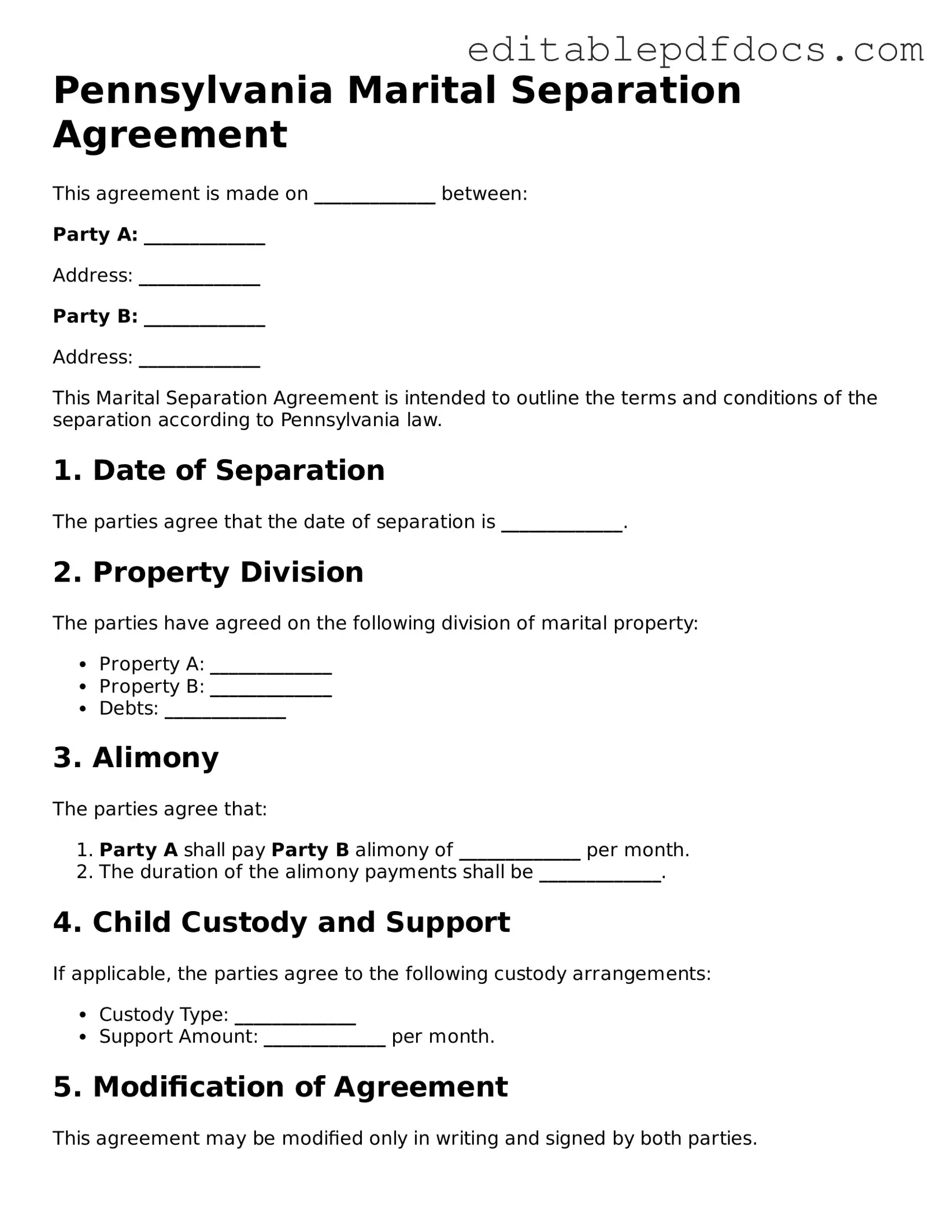Filling out the Pennsylvania Marital Separation Agreement form can be a straightforward process, but many individuals make common mistakes that can lead to complications down the line. One frequent error is failing to include all necessary information. Each section of the form must be completed with accurate details about both parties, including names, addresses, and other relevant information. Omitting even a small piece of information can cause delays or legal issues.
Another mistake often made is not being clear about the terms of separation. It’s crucial to specify how assets and debts will be divided. Vague language can lead to misunderstandings later. For instance, simply stating that assets will be shared does not clarify how they will be divided, which can result in disputes.
People sometimes forget to address child custody and support arrangements. If children are involved, the agreement should outline custody arrangements and child support payments. Failing to include these details can leave important decisions unresolved, which can be detrimental to the children’s well-being.
Additionally, individuals may overlook the importance of having the agreement reviewed by a legal professional. While it’s not mandatory, consulting with an attorney can help ensure that the agreement complies with Pennsylvania laws and adequately protects both parties' interests. Skipping this step can lead to costly mistakes that might have been easily avoided.
Another common oversight is neglecting to date the agreement properly. All parties should sign and date the document to validate it. Without proper signatures and dates, the agreement may not hold up in court, which can create significant complications in the future.
People often underestimate the importance of being thorough when listing assets and debts. It’s essential to provide a complete inventory of all marital property and liabilities. Leaving out significant items can lead to disputes later on, as one party may claim ownership of an asset that was not included in the agreement.
Some individuals may also rush through the process without fully understanding the implications of their decisions. Each term in the agreement can have long-lasting effects, so taking the time to comprehend what each section means is vital. This includes understanding how the separation will impact taxes, property rights, and future financial obligations.
Lastly, failing to keep copies of the signed agreement can create problems. After the document has been completed and signed, each party should retain a copy for their records. This ensures that both parties have access to the terms of the agreement and can refer back to it if any issues arise in the future.
